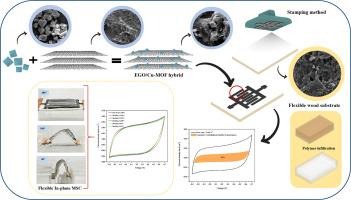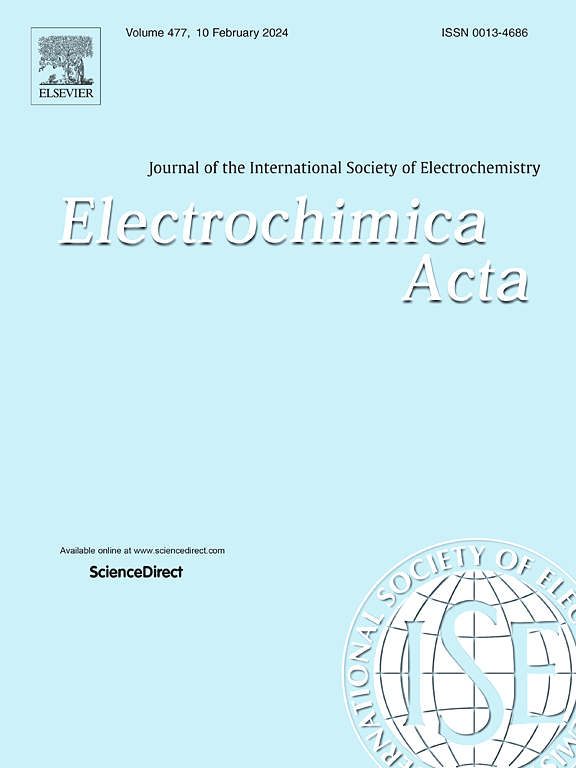Facile Fabrication of Copper-based Metal-Organic-Framework/Graphene Hybrid Supported on Highly Stretchable Wooden Substrate for In-plane Micro-supercapacitor with Potential Applications as Wearable Devices
IF 5.5
3区 材料科学
Q1 ELECTROCHEMISTRY
引用次数: 0
Abstract
The rise in demand for flexible power sources in the application of portable and wearable devices has highlighted the importance of micro-supercapacitors (MSCs) due to their preferred features, including high power density and ultrastability. Although a wide range of active materials is available, developing cost-effective fabrication methods using flexible substrates and innovative materials is still challenging. In this work, in-plane interdigitated MSCs were developed using exfoliated graphene oxide (EGO) and a Cu-based metal-organic framework (Cu-MOF) hybrid by a facile stamping method on a flexible wood substrate. This was followed by a reduction state of EGO by nascent hydrogen. The flexible substrate was created through lignin modification and infiltration of Balsa wood sheet. The hybrid material with an equal weight percentage of Cu-MOF and EGO demonstrated significant electrochemical performance, which is explained by the synergistic interaction between the hybrid's components, resulting from the porous structure and high surface area of Cu-MOF along with plentiful active sites and electrical conductivity offered by EGO. The fabricated MSC of the hybrid material exhibited suitable areal capacitance and energy density of 5.75 mF cm-2 and 0.798 µWh cm-2, respectively, at a current density of 0.09 mA cm-2. Moreover, it also showed an outstanding capacitance retention of 93 % after 2000 cycles. The results indicate that the MSC, prepared from the hybrid with the same ratio of each component, has the potential to serve as an efficient energy storage device for wearable and flexible miniaturized applications.

求助全文
约1分钟内获得全文
求助全文
来源期刊

Electrochimica Acta
工程技术-电化学
CiteScore
11.30
自引率
6.10%
发文量
1634
审稿时长
41 days
期刊介绍:
Electrochimica Acta is an international journal. It is intended for the publication of both original work and reviews in the field of electrochemistry. Electrochemistry should be interpreted to mean any of the research fields covered by the Divisions of the International Society of Electrochemistry listed below, as well as emerging scientific domains covered by ISE New Topics Committee.
 求助内容:
求助内容: 应助结果提醒方式:
应助结果提醒方式:


